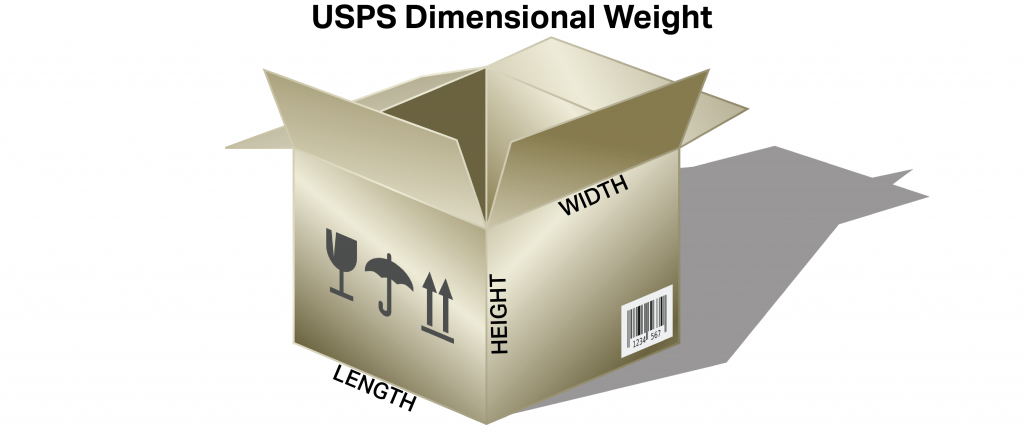Are You Ready for USPS Dimensional Weight Pricing?
 The USPS will be implementing new postage rates on Sunday, June 23, 2019. Listed below are the highlights of the 2019 USPS changes:
The USPS will be implementing new postage rates on Sunday, June 23, 2019. Listed below are the highlights of the 2019 USPS changes:
- Dimensional Weight Pricing will go into effect across all USPS Postal Zones for Packages large than 1 Cubic Foot.
- First Class Mail International can only be used to send Documents, weighing less than 1lb.
What is Dimensional Weight (DIM Weight)?
Dimensional Weight pricing applies to larger packages with lower weights. The general idea behind it is that e-commerce merchants pay for the space these packages take up on a truck, rather than the physical weight of the package. If the calculated Dimensional Weight is higher than the physical weight of a package, you are required to pay the higher of the two.
- Dimensional Weight refers to to how much space a package takes up in a truck or an airplane during shipping.
- Dimensional Weight Pricing charges more for large packages that weigh very little.
- Dimensional Weight Pricing only applies to packages larger than 1 Cubic Foot.
- Most E-Commerce packages are less than 1 Cubic foot and are not subject to Dimensional Weight Pricing.
- The USPS has been using Dimensional Weight Pricing in some mail classes and in some zones for some time.
Real World Example:
The Dimensional Weight Formula:
- (LxWxH)/17728
If the result is greater than 1, move on to step 2 to find out the Dimensional Weight of your package. - (L x W x H)/166 = Dimensional weight
(for FedEx and UPS the divisor is 139 for all sizes).
How Will Dimensional Weight Pricing Affect My Business?
Any size box whose sides, when multiplied together equal 1 cubic foot, or 1728 cubic inches, or less, is fine. 1 Cubic Foot may sound small, but is actually quite a large box. As a cube, a cubic foot is 12″ x 12″ x12″. Here is a box you may be more familiar with, 18″ x 16″ x 6″. This is a common box size for goods sold online. When the length and width and height of this box are multiplied together, it is 1728 cubic inches, exactly 1 cubic foot.
How to Prepare:
- Examine your products and the boxes you ship them in. Could they fit into a smaller box? The smaller a box you use will, as a general rule of thumb, reduce your shipping costs.
- Dimensional Weight Pricing will make calculating costs when offering free shipping a little more challenging. There is no such thing as free shipping. The cost of free shipping is paid for by the customer in the form of higher prices or absorbed by the seller as a cost of making the sale. It comes down to the margin of profit you, as the seller, feel comfortable with. If you are selling a million pair of shoes online, then a small margin can add up to a lot of profit. However, if you are selling hundreds of handmade sweaters, a reduced margin can spell trouble for your company. Examine your selling history and determine where your customer base is located. If you are in California and sell cold weather clothing to customers in Maine, your shipping costs could be too high to offer both free shipping and a competitive price. Yes, we know that free shipping is expected these days but it just might not be possible for you.
Still Need Help?
Please feel free to reach out to one of our awesome Technical Support Representatives in St. Louis. We are happy to help.
[button link=”https://www.shipworks.com/shipping-carriers/usps/”] Save on USPS Rates with ShipWorks[/button]